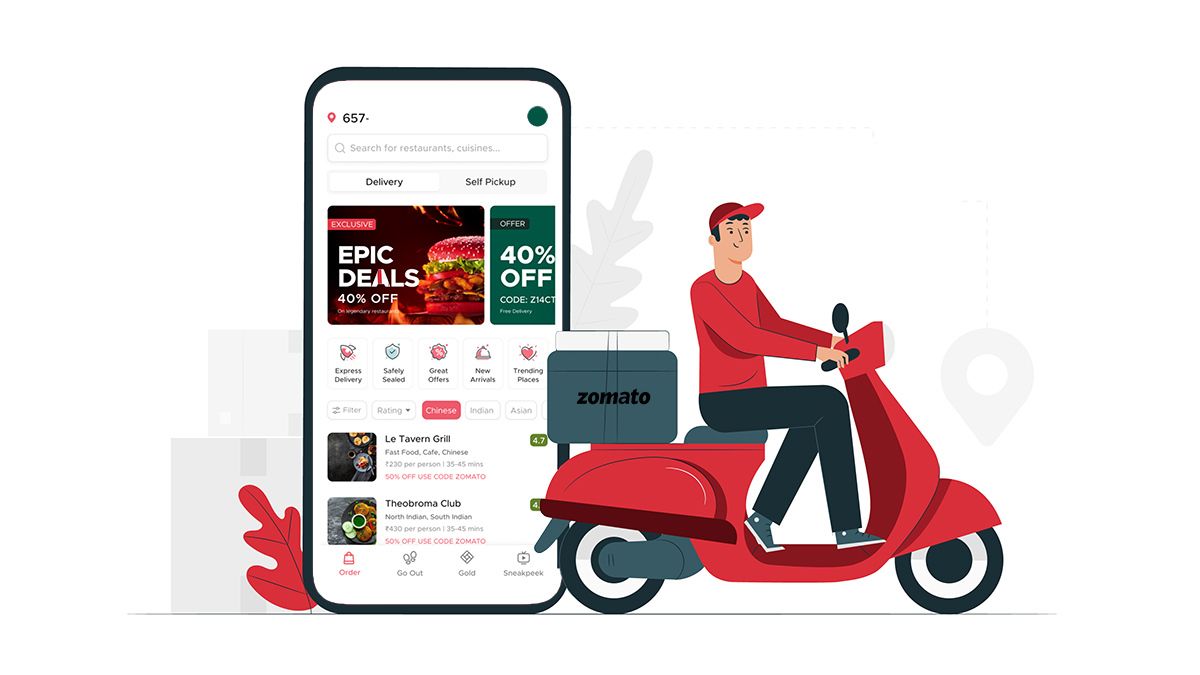Launching a business like Zomato requires a blend of strong tech execution, logistical coordination, and a clear monetization strategy. Zomato revolutionized the food delivery and restaurant discovery industry with its dual business model and user-centric features. This guide walks you through everything you need to know to start and scale a Zomato-like business, from idea to app development, and marketing to monetization.
1. Understanding Zomato’s Business Model
To emulate Zomato, it’s important to understand its hybrid model:
a. Restaurant Aggregator
- Lists restaurants with menus, photos, ratings, and reviews.
- Offers discovery tools based on location, cuisine, and user preferences.
b. Online Food Delivery Platform
- Accepts orders via mobile/web, connects restaurants with delivery personnel.
- Uses location intelligence and real-time tracking.
c. Revenue Channels
- Commission on orders (10–30%)
- Advertisement and promotions for restaurants
- Subscription plans for users (Zomato Pro)
- Logistics/delivery fee
2. Key Features of an App Like Zomato
To develop an app like Zomato, you’ll need three separate panels:
a. User Panel
- Registration/login
- Browse restaurants and dishes
- Filters (cuisine, price, rating)
- Reviews and ratings
- Order placement & real-time tracking
- Multiple payment options
- Offers & loyalty points
b. Restaurant Panel
- Menu management
- Order management
- Sales analytics
- Profile editing
- Customer support
c. Admin Panel
- User management
- Restaurant onboarding
- Delivery tracking
- Promotions & ads
- Revenue analytics
- Dispute resolution
3. Market Research and Planning
a. Define Your USP
- Are you targeting a local city, offering healthy meals, or a premium dining experience?
b. Competitor Analysis
- Study Zomato, Swiggy, Uber Eats, DoorDash, etc.
- Identify gaps: e.g., rural delivery, subscription models, special diets.
c. Decide Your Monetization Model
- Commission per order
- Restaurant advertising
- Premium subscriptions
- Delivery charges
- Data insights for vendors
4. UI/UX Design Strategy
a. Design Tools
- Figma, Sketch, Adobe XD
b. Key UX Considerations
- Minimal taps to checkout
- Visuals of dishes and restaurants
- Easy-to-use filters
- Order tracking on map
c. Responsive Design
Ensure seamless experience across:
- Android
- iOS
- Tablets
- Web browser

5. Choosing the Right Tech Stack
a. Front-End Development
- Mobile Apps: React Native, Flutter (cross-platform), or Swift (iOS) + Kotlin (Android)
- Web Platform: React.js, Next.js, Vue.js
b. Back-End Development
- Node.js, Django (Python), Ruby on Rails
- API Architecture: REST or GraphQL
c. Databases
- PostgreSQL, MongoDB, Firebase
d. Cloud & Hosting
- AWS, Google Cloud, Microsoft Azure
e. Maps & Location Services
- Google Maps API, Mapbox, Geofencing APIs
f. Payments & Wallets
- Stripe, Razorpay, PayPal, Apple Pay, Google Pay
g. Notifications
- Firebase Cloud Messaging (FCM), OneSignal
6. Core Development Phases
a. MVP Development (3–5 months)
- Focus on core flows: browsing, ordering, payment, delivery tracking
b. Advanced Feature Development (6–12 months)
- AI-based recommendations
- Dynamic pricing
- In-app chat
- Referral & loyalty systems
c. Admin Dashboard
- Use tools like AdminBro, Forest Admin, or custom build for full control
7. Delivery Logistics and Operations
a. Partner With Delivery Personnel
- Hire freelance riders or tie up with 3rd-party logistics.
b. Real-Time Tracking
- Use GPS tracking integrated with delivery app.
c. Delivery Management Tools
- Route optimization
- ETA updates
- Delivery proofs (e.g., OTP, image confirmation)
8. Testing & Quality Assurancea. Testing Types
- Functional testing
- UI/UX testing
- Performance testing under load
- Security testing
b. Tools
- Selenium, Postman, JMeter, Appium
9. Launch and Deployment
a. App Store Submission
- Comply with Apple App Store and Google Play guidelines
b. Website Hosting
- Use CDN for faster performance
- SSL for security
c. Beta Testing
- Release to a closed group for feedback before full launch
10. Marketing and User Acquisition
a. Pre-Launch Buzz
- Teasers on social media
- Email collection for early access
b. Post-Launch Campaigns
- Influencer marketing
- Discounts and offers
- Google Ads & social media ads
- Local food festivals and pop-ups
c. SEO & Content
- Blogs about food trends, restaurant reviews
- Geo-targeted SEO for cities and areas
d. Referral & Loyalty Programs
- Encourage viral growth with referral bonuses
11. Maintenance and Continuous Improvement
a. Regular Updates
- New features
- Bug fixes
- UI enhancements
b. Customer Feedback
- In-app surveys
- Support chat
- App store reviews
c. Analytics and Optimization
- Use Mixpanel, Google Analytics, Hotjar
- Track conversion, drop-offs, retention
12. Challenges to Watch Out For
- Restaurant onboarding and menu accuracy
- Delivery delays and last-mile tracking
- Fake reviews and spam control
- Scaling infrastructure during peak hours
- Customer retention in competitive markets
Conclusion
Starting a business like Zomato is not just about launching an app—it’s about creating a complete food-tech ecosystem. From restaurant partnerships and delivery logistics to robust tech infrastructure and user experience, every element plays a crucial role in your success.
By following the roadmap in this guide, you’ll have a clear path to:
- Validate your idea
- Launch your MVP
- Scale your operations
- Monetize effectively
- Compete in the on-demand food delivery market

